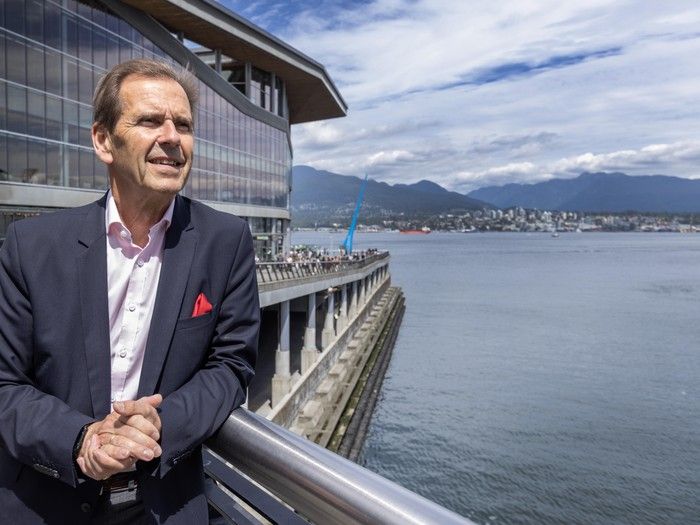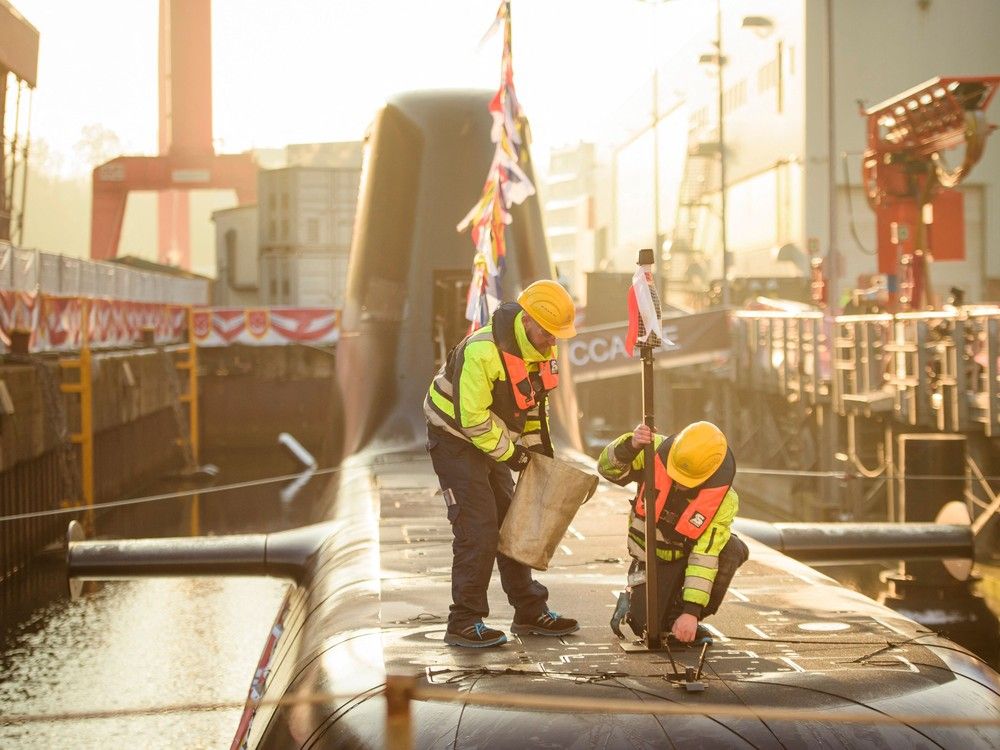
Canada won’t decide who will build new submarines for the Royal Canadian Navy until 2028, but the program is lucrative enough that bidders are already working to shore up suppliers and support, including those on the West Coast.
In July 2024, then-defence minister Bill Blair unveiled a plan to buy up to 12 new submarines for the navy, capable of patrolling the Arctic.
“When you read up to 12 submarines, then you get really excited,” said Joachim Schönfeld, senior representative in Canada for German-based Thyssenkrupp Marine Systems, one of five potential bidders to the patrol submarine project.
“That is of extreme, extreme interest for the company,” Schönfeld said if the joint German/Norwegian proposal Thyssenkrupp is submitting.
The government has not released details about the project’s budget, but Postmedia defence journalist David Pugliese reported an estimate would be in the tens of billions of dollars over the lifetime of the vessels.
Besides Thyssenkrupp, bidders from Spain, France, Sweden and South Korea have responded to Ottawa’s request for information, the initial phase of the procurement process.
The winner will build the vessels in their home country.

Schönfeld visited Victoria and Vancouver last week to start lining up potential partners in Thyssenkrupp’s bid to supply Canada with the same Class 212CD submarine it is developing for Germany and Norway, which uses hydrogen fuel cells to provide long underwater endurance.
A significant opportunity lies in developing the West Coast maintenance facility the navy would need for the program, which is what specifically brought Schönfeld to Victoria and Vancouver.
“You cannot start early enough to find the right partners and to prepare everything to be ready when the first submarine will be delivered,” Schönfeld said.
He said he had plans to meet with existing shipyards, including Seaspan, which already has a close relationship with Thyssenkrupp. Seaspan is building joint support ships for the Royal Canadian Navy based on designs by Thyssenkrupp.
“The very short answer is it’s huge,” Dave Hargreaves, senior vice-president at Seaspan Shipyards, said of the potential opportunity.
Seaspan is already involved in submarine maintenance as the main contractor for the Royal Canadian Navy’s existing four Victoria Class submarines and has built up considerable expertise over the last 15 years.
Hargreaves said Seaspan has had close discussions with all five bidders in the competition. He added that they all have somewhat different proposals and levels of experience, but the program as a whole would represent a doubling of the navy’s maintenance requirement.
Hargreaves said the existing maintenance program supports some 250 jobs at facilities in Victoria, which could expand to about 1,000 skilled positions. That would include positions to maintain electronic and electrical systems, steel fabrication and other core systems.
“It will be a significantly larger operation than we have today, so it does represent a significant opportunity for us on the West Coast, most likely in the Victoria area,” Hargreaves said.
With a 30- to 40-year design life for the subs, Hargreaves added that such an operation would be long-term, building on Seaspan’s work to build vessels for the navy and Coast Guard under the National Shipbuilding Strategy.
The submarine program coincides with Prime Minister Mark Carney’s commitments to increase defence spending and reduce Canada’s dependence on U.S. defence contractors, which has B.C. looking for its own ways of supporting the effort.
Jobs Minister Ravi Kahlon wasn’t made available for an interview Thursday, but the Globe and Mail reported his confirmation that the province will release its own defence industry framework in October.
In a statement in response to Postmedia questions, Kahlon said the province “recognizes the broader challenges facing our nation” when it comes to defending its sovereignty. He referred to the increased focus on defence as a “timely and strategic opportunity for B.C.”
“Overall, B.C. is uniquely positioned to play a critical role in advancing Canada’s defence priorities, offering proven industrial capacity, cutting-edge innovation and strategic geography that together drive national security, economic growth and global competitiveness,” Kahlon said.
In March, Postmedia’s Pugliese reported on a delegation South Korea sent to Ottawa that pitched the newly developed KSS-III submarine in its own fleet as an option, with significant benefits for Canadian industry.
It is too early to guess whether any bidder has an advantage, but Schönfeld said Thyssenkrupp Marine Systems will look to “Canadianize our current supply chain,” as the program advances.
Canada anticipates a contract award by 2028 with the first delivery of a submarine by 2035.
Schönfeld said Thyssenkrupp is expanding its capacity to build submarines for its own program to build 12 submarines for Germany and Norway. But to underline the company’s commitment, he said Norway and Germany have agreed they’ll adjust their own delivery schedules to make sure Canada could get its first new Class 212CD sooner than 2035.